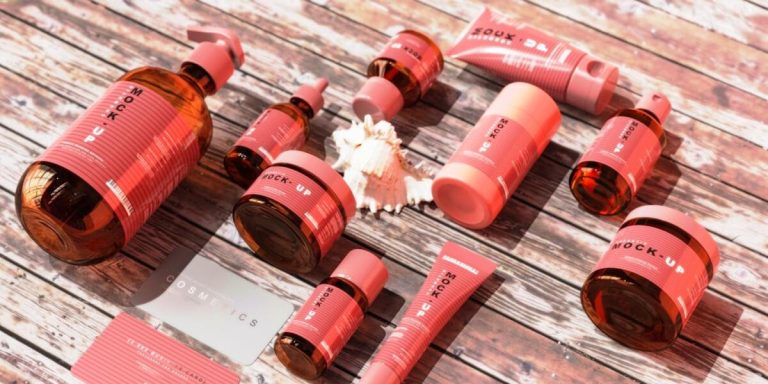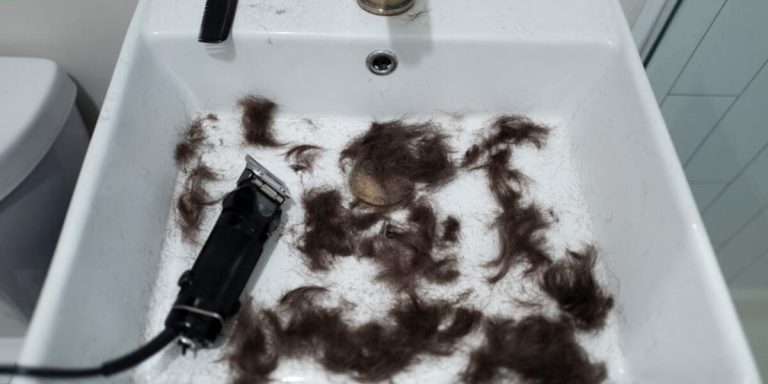How to Care for 4C Hair: A Comprehensive Guide
Understanding how to care for 4c hair can be a tricky task. This unique hair type is known for its tight coils and extreme fragility, which makes it important to handle with the utmost care. A well-maintained regimen goes a long way toward maintaining healthy and vibrant locks, allowing your true beauty to shine from within.
It’s essential though that you have trusted guidance on this journey since many generic tips don’t take into account the specific needs of 4C tresses. Whether you’re new to navigating the complexities of this unruly but beautifully textured coif or an old pro looking for refreshed insights, consider us as your lighthouse in often turbulent seas filled with misinformation about caring effectively for 4C hair.
Did you know?
4C hair, the most fragile type on the African ancestry spectrum, features a unique ‘Z’ pattern that increases its susceptibility to dryness and breakage.
Understanding 4C Hair: Characteristics and Maintenance Needs
Recognizing the unique characteristics of 4C hair is the essential first step towards its proper care and maintenance. In fact, having a comprehensive understanding goes beyond knowing it’s widely acclaimed as one of the most beautiful and versatile types when nurtured properly. It helps to know that this specific hair type possesses a tight curl pattern, often resulting in unruly tangles if not catered for with an appropriate regimen.
In addition to recognizing its traits, appreciating how these features contribute to your overall appearance is vital too. High shrinkage level associated with 4C hairs may sometimes appear deceptive but once recognized, can be leveraged as part of a distinctive natural style statement in today’s world where individuality counts more than ever.
To maintain 4c hair effectively, focus on retaining moisture because it naturally loses hydration faster. The tight coils make it hard for sebum to move from the scalp to the ends. Therefore, care for 4c hair by:
- Incorporating generous hydration routines with water-based products daily.
- Opting for frequent deep conditioning sessions to nourish and increase elasticity, reducing breakage.
These steps are crucial due to the common dryness in this hair type.
The Unique Structure of 4C Hair Strands
4C hair is known for its tight coils, extreme shrinkage and high density. This natural type of African hair requires specialized care to maintain health and radiance.
The unique structure of 4c hair strands makes them prone to damage and breakage if not properly cared for. The key lies in understanding this complex structure before delving into how best to look after it.
Unlike straight or wavy types, the curvature of 4C hairs doesn’t allow oils from your scalp down through the length of your locks naturally. Hence, they become dry more often than other types which means regular hydration is crucial for these curls’ vitality and shine.
You can envisage a single strand as an elongated spring; coiling tightly with minimal space between each turn – that’s essentially what gives our beautiful 4c sisters their distinct kinky appearance!
However, on the flip side due to such compact curl pattern – it becomes vulnerable towards harsh environmental factors like intense sun rays or cold winter breeze causing moisture loss leading ultimately towards brittleness followed by split ends eventually breaking off completely! So having understood this fact let’s explore some preventive measures in learning how best we can pamper our crowning glory – because remember every head deserves love indeed!
Keywords play an essential role here; consistent usage enhances visibility on internet searches enabling wider reach among targeted audience who are seeking exact info related specifically with ‘how to care for 4c hair’.
Establishing a Gentle Cleansing Ritual for Optimal Scalp Health
Establishing a gentle cleansing ritual is instrumental in managing and caring for 4C hair. This unique hair type requires special attention due to its tight coiling, denseness, and susceptibility to dryness or damage. Let’s explore how the right cleaning regimen can make all the difference.
Firstly, aim for regular but not excessive washing. Ideally, once every week or two weeks should suffice as it maintains scalp cleanliness while preventing natural oils from being excessively stripped away; this frequency may be adjusted based on your personal lifestyle activities such as workout habits or climate conditions.
While shampooing your 4c hair strands, consider using shampoos that are sulphate-free since these formulas tend to be much gentler on both your strands and scalps compared with their harsher counterparts. They help maintain vital oil balance without causing unnecessary drying effects.
Once you’ve chosen an appropriate wash schedule and product list catered specifically towards those with tightly coiled locks like yours – remember always apply generously throughout head making sure reach root tip allowing maximum coverage possible hence increasing likelihood better overall health outcomes long run!
Gentle scalp massages during each cleanse also play a pivotal role in maintaining optimal scalp health by enhancing blood circulation promoting healthy follicular growth plus easing any tension stored there too.
Crafting the Perfect Moisturizing Routine for 4C Hair
Caring for 4C hair, one of the most delicate and unique types of natural hair, requires a meticulous moisturizing routine. As such is its susceptibility to dryness due to its tightly coiled structure. The lower level of sebum oils reaching from the scalp down to these curls’ end often leaves them thirsty for more moisture.
Crafting that perfect regime starts with understanding your individual curl pattern better in an endeavor towards mitigating frizziness while maximizing volume and shine. It’s all about hydrating effectively without weighing it down – quite like achieving a careful balance!
First up in this seamless daily routine would be washing your strands with sulfate-free shampoos and conditioners specifically designed for 4c textures. These provide hydration without stripping away essential oils or causing additional tress stress! Supplemented by regular deep conditioning treatments using natural ingredients such as shea butter or olive oil further strengthens their capacity to retain moisture throughout the week.
Finally, applying leave-in conditioners coupled with sealing products can contribute significantly towards securing maximum durability against damage induced brittleness whilst offering indispensable protection against harmful environmental elements encountered on busy weekdays out there on city streets under direct sunlight; even serving as ideal pre-styling treatment if you’re planning any protective hairstyles shortly afterwards!
Remember always: Hydrated hair equals happy healthy textured locks basking confidently in today’s modern beauty world spotlight where embracing our roots renders us uniquely radiant stars indeed!
Balancing Protein Treatments with Hydration
Protein treatments are potent tools in your arsenal for stronger hair as they fortify the structure of your locks from within, reducing breakage and imparting elasticity. However, an excess of protein might prompt stiffness and brittleness. To avoid this issue while capitalizing on the benefits of these power-packed remedies, follow them up with deep conditioning sessions.
Deep conditioners come loaded with moisturizing agents that lock moisture into each strand: think oils like coconut or argan oil combined with humectants such as glycerine or honey providing intense hydration – an essential need for typically dry 4C hair textures.
Practicing moderation is key when it comes to using protein treatments. Overuse could tip off balance by overloading the hairs’ keratin structure resulting in weak ends prone to splitting even though their mid sections may feel strong due its now coarse nature brought about through excessive treatment use.
- Schedule monthly retreatments.
- If damage is severe, treat fortnightly until hair health improves.
- Once restored, return to the original monthly schedule.
- Allow sufficient time between applications to avoid nutrient overload.
By smartly planning and providing nutrients, you’ll achieve:
- Lustrous, voluminous curls
- Year-round strength and vitality
- Enviable natural beauty that turns heads
Sealants and Oils: Locking in Moisture for Lasting Softness
Sealants and oils have a critical part to play in any 4C hair care routine. As we delve into how to care for 4C hair, understanding their importance is pivotal in maintaining the softness and texture of your locks.
Firstly, let’s identify what sealants do. They are typically oil-based products used after applying moisturizer on your strands. Their primary role is locking-in moisture which acts as an efficient barrier against environmental aggressors like heat, pollution or dry winds that can cause damage.
Recommended Sealants for Your Moisture Routine:
1. Shea Butter: This natural fat extracted from Shea tree nuts has been praised by many women with 4c type hair for its amazing sealing properties.
2. Jojoba Oil: This oil shares identical characteristics with our scalp’s sebum making it very effective at preserving moisture content while keeping your follicles healthy.
3.Jamaican Black Castor Oil: It assists in enhancing growth whilst providing excellent moisturizing effects — ideal switch when you’re targeting both length retention and hydration.
Let’s now explore why you should consistently include sealant oils in your regimen, having established their function.
Using suitable sealant grants lasting supple feel since they help retain water (the ultimate hydrator), preventing dryness hence contributing towards easier manageability during combing or styling sessions.
Protective Styling Strategies to Promote Growth in 4C Hair
Protective styling holds a significant role in the journey of maintaining and promoting growth for 4C hair. In this context, it’s important to remember that familiarizing oneself with tried-and-true strategies can make all the difference. One such strategy is low manipulation styles which not only lower breakage risk but also reduce constant handling, helping your strands retain moisture longer.
Remember those days when we were misguided by the belief that tighter braids or slick ponytails equated to better hairstyles? It’s high time we discard these misconceptions as they cause unnecessary tension on our scalp leading to possible hair loss over time. Instead, adopt gentler approaches like twists or loose buns which serve their purpose without any added damage.
Ultimately though every individual’s hair responds differently based upon genetic factors and ongoing care practices hence understanding one’s own unique needs becomes integral part of this process. So let us march towards celebrating our natural curls fully armed with knowledge about protective styling strategies tailored specifically towards caring for our glorious 4C mane.
Low-Manipulation Styles That Retain Length
Understanding how to care for 4C hair can be a journey full of trials, errors and eventually triumphs. One key aspect is adopting low-manipulation hairstyles that help in retaining length and promoting growth.
Firstly, it’s essential to understand the concept of “Low-Manipulation Hairstyles”. These are basically styles which require minimal combing, brushing or pulling. The less you physically disturb your hair by excessive styling or heat tools usage – the more likely it will retain its length and health.
Among popular choices is ‘The Bun’. This simple style works on any texture but excels with 4c due to its natural density. It keeps ends tucked away securely reducing friction against clothing whilst adding an edgy look.
Twist-outs and braids outs also fall under this category. They’re versatile enough- ranging from micro twists for ultra-protection to chunky flat ones just as protective yet quicker to install.
Another great hairstyle option includes mini-twists.They’re effective not only because they keep strands protected but since they last up-to two weeks before needing re-doing,it reduces handling frequency thus leading towards our goal: Length retention!
We should never forget about Protective Up-dos either! Styles like French rolls where most part remains tucked-in decreases breakage chances while providing sleek appearance simultaneously.Practice makes perfect here; so don’t get disheartened if first few attempts aren’t successful!
Nighttime Habits to Preserve Hairstyles and Reduce Breakage
1. Wrap-up for The Night: Wrapping up your hair with satin or silk scarves is an excellent way to reduce frizz and protect from tangles that could result in damage.
2. Sleep on Silk: Swapping out cotton pillowcases for silk ones reduces friction when you toss around while sleeping, leading to less breakage and split ends—an essential step if you’re wondering how to care for 4c hair effectively.
3. Apply Moisturizers: Before hitting the sack, take time to moisturize your locks adequately by using leave-in conditioners specifically designed for styling 4C type hairs which typically need more moisture than other types due to its coily nature.
5.Gentle Detangling Routine – Make use of wide-tooth combs or detangling brushes before going bed as part of preventing knotting which can often lead unnecessary stress on strands next morning while grooming it.
Conclusion
In wrapping this up, we’ve demystified the essentials of how to care for 4C hair. From proper cleansing methods to deep conditioning hacks and effective protective styles, it’s clear that maintaining these coils is more than a routine – it’s embracing a lifestyle centered around nourishment and patience.
Journeying through our website grants you access to learn even more on “Hair Care and Maintenance”. With every scroll comes newfound knowledge aimed at empowering your natural hair journey while promoting its health and vivacity. So why wait?
Dive in, explore further because here lies an endless stream of insights awaiting discovery!







